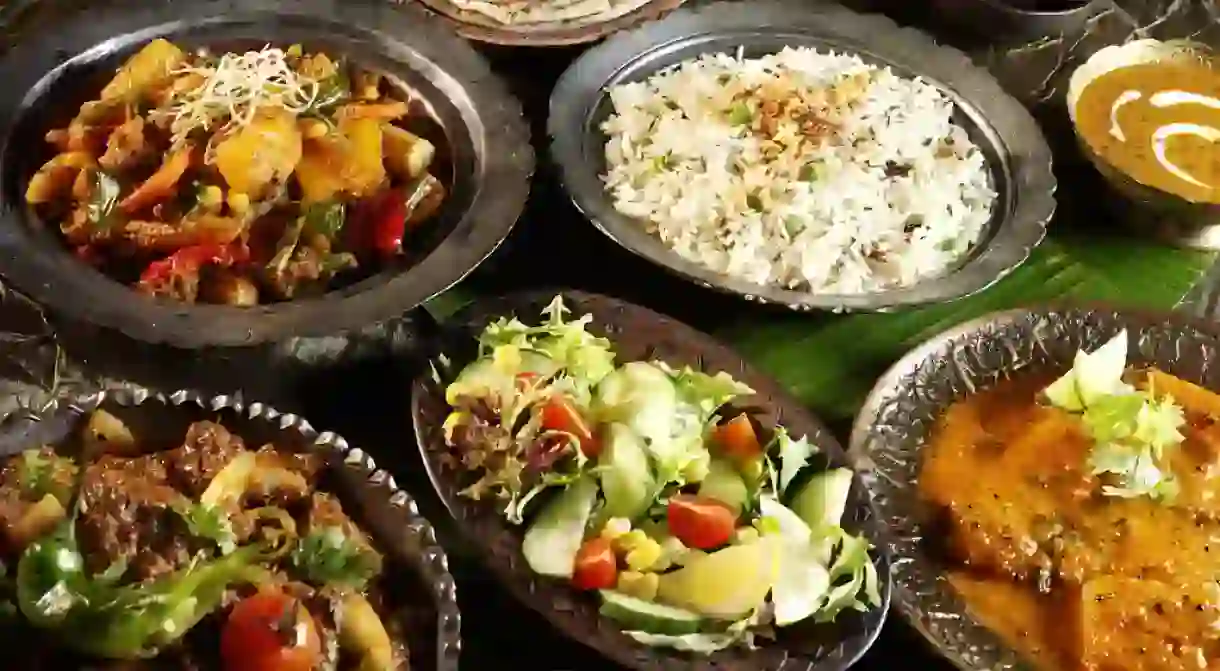11 Facts You May Not Know About Indian Food

Rich with external influences, impressive history and all sorts of interesting ingredients, Indian cuisine is as fascinating as it is delicious. Here are 11 facts about Indian food that you may not know.
Six different tastes
If you think spicy is all there is to Indian food, think again! According to food theory, all Indian food is made up of six primary tastes or rasas – sweet (madhura), salty (lavana), sour (amala), pungent (katu), bitter (tikta) and astringent (kasya).

External influences
Having been part of global trade routes for thousands of years, India has naturally had plenty of exposure to cuisines from around the world. Indian food has been influenced by all sorts of cuisines – from Persian and Central Asian to Arab and Mediterranean. Some of the country’s most popular foods – from the hearty samosa to desserts such as jalebis and gulab jamuns – are imports.
Land of spices
Rightfully known as the ‘land of spices’, India is the largest producer of spices in the world. The country produces over 70% of the world’s spices and is also home to a higher variety of spices than any other in the world.

Historic staple diet
Indians have been cultivating and consuming the same categories of grains and legumes they still eat for thousands of years. Present-day staple foods such as lentils, whole-wheat flour, rice, and pearl millet are found to have been part of the Indian diet from around 6,000 B.C.E.
Long history of salt and pepper
India has been producing salt for over 5,000 years, particularly in its Rann of Kutch area in the state of Gujarat. Evidence of black pepper being used in Indian cooking has been found from as early as 2,000 B.C.E. The southern state of Kerala was known far across the oceans for its black pepper exports during ancient times, when the spice was known as ‘black gold’ and considered a much-valued commodity in parts of the world.

Three categories of food
As per Ayurveda, India’s ancient medicinal system, there are three primary categories of food – Satvic, Rajasic and Tamasic. Satvic food comprises all that’s natural and minimally processed such as vegetables, and is considered to have a positive, calming and purifying effect on the body and mind. Rajasic food is spicy, oily, salty or bitter and drives ambition, competition and egotistic pursuits. Tamasic food is overly processed, toxic, difficult to digest and has negative effects on both mind and body.
Thriving drinking culture
India has been brewing its own booze from as early as 3,000 B.C.E. From south India’s ever-popular toddy or kallu to the millet-based beers of northeastern India, there are numerous local liquors that the country considers part of its culinary traditions.

Vegetarian or not?
India has the world’s second -lowest rates of meat consumption per person. Yet the majority of the country does not follow a vegetarian diet, as commonly believed. As per a survey released by the government of India, only about 29% of the country’s population follows a vegetarian diet.
Borrowed modern staples
Many staple ingredients of modern Indian cooking including tomatoes, potatoes and chillies, don’t have origins in the subcontinent. They were introduced to Indian cuisine only in the 15th and 16th centuries with the arrival or Portuguese traders in the country.

Hottest chilli
India is home to one of the world’s hottest chillies – bhut jolokia or ghost pepper – which is estimated to be about 400 times hotter than Tabasco sauce. Grown in the states of Arunachal Pradesh, Assam, Nagaland and Manipur, the chilli was certified as the world’s hottest in 2007 by Guinness World Records, though it lost its spot in subsequent years.
Candy’s Indian roots
It is in India that the crystallization of sugar from sugarcane juice first began – becoming a widespread practice by the 5th century C.E. It was then locally known as khanda, which is the source of the English word candy.













